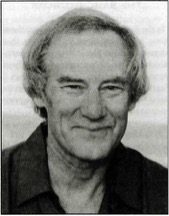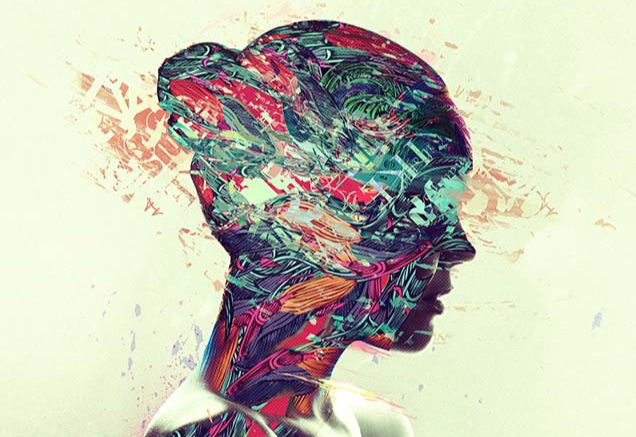Practicing for Awakening

These remarks have been excerpted from a day-long program given by Jack Engler at the Barre Center for Buddhist Studies on November 1, 1997. Jack has had a long association with Dharma study and practice. He studied Pali language and Abhidhamma at the Post-Graduate Institute of Buddhist Studies in Nalanda, Bihar, and practiced meditation for several years in India with Anagarika Munindraji and Dipa Ma. He also studied with the Ven. Mahasi Sayadaw in Burma. He is co-author of Transformations of Consciousness (Shambhala, 1986), and has been a clinical psychologist for more than twenty years. Jack is on the BCBS board of directors, and teaches in Barre from time to time.
The Possibility of Awakening
As the dharma has spread into different cultures over the centuries, it has always been adapted and practiced somewhat differently in each unique cultural environment. We are seeing this again today as dharma is being practiced within western culture.
Asian and Asian-trained American teachers first brought the dharma here in its traditional context as a practice for enlightenment. The longer it has been here, though, the more it has adapted—or been adapted—to different western cultural forms, and the more it has inevitably been integrated with a lot of other processes of personal transformation prevalent in our culture like psychotherapy and stress reduction. And that is perfectly legitimate. Particularly in the form of mindfulness, meditation has proven to be a very adaptable and powerful practice. It can alleviate anxiety and stress, it can promote the development of basic psychological functions like the capacity for self-observation and self-regulation of emotional states, it can access the unconscious and facilitate psychological insight into oneself.

Yet, at least in the mainstream world in which I mostly live, it seems we talk less and less about the original and more profound purpose of practice—the realization of enlightenment—as a possibility for ourselves. I think we are in danger of repeating what has happened in all Buddhist countries: holding on to awakening as an idea or ideal, but letting it become so far removed from personal aspiration and practice that it becomes a kind of carrot out there on the horizon: something that maybe we will some day, some way, get to—but not right now. We rationalize this by saying we have given up “striving” or any “gaining idea.”
Somewhere in our hearts we’re in danger of losing our personal connection with awakening as a possibility for ourselves. It’s extremely important we don’t do that, because awakening is our true nature. It is the work we have come here to do. Losing touch with who we really are, with what we most hunger for and love, produces the deepest kind of self-alienation and suffering.
Perhaps you are all familiar with that famous statement of the Buddha: “I teach suffering, bhikkhus, and the end of suffering.” Now if the Buddha only taught suffering, we’d have a problem. But he taught the end of suffering too: all these states of mind that plague us can come to an end. Do we really believe that? Was he really talking about me? Yes, he was!
It is important to keep the original aspiration and possibility alive, especially as dharma takes root here in the West. When I was trying to create a frame of reference for today’s workshop, I asked myself, “What do I care most about? What is most passionate in my heart? What motivated me in the beginning? What has sustained me through all the years?” And I realized that for me all these questions are really resolved in that statement of the Buddha that there is an end to suffering, that we can awaken—not as some far off, distant, ideal possibility, but as a possibility in this life.
Three Types of Suffering
What is awakening? It’s important to have some idea of what it means. Traditionally, this is known as the need for “right view” in starting out. Otherwise we import all our own conscious and especially unconscious associations into it, and it becomes anything and everything from the answer to all our problems to an unconscious narcissistic wish for perfection or invulnerability. In Buddhist teaching, awakening is a very specific event with very specific outcomes.
It’s important we don’t lose our personal connection with awakening as a possibility for ourselves, because awakening is our true nature. It is the work we have come here to do.
One way of beginning to grasp it is to ask, what is the problem to which enlightenment is the solution? And how does practice address that? Because enlightenment is not the answer to all problems. It won’t tell me how to resolve conflicts with my partner—and the really bad news: it won’t by itself prevent them!—it won’t tell me how to raise my kids or how to pay the mortgage, it won’t by itself make work or career more satisfying or fulfilling. So what is it that the practice of dharma addresses? It is important to understand this because an investigation of this question makes clear why the path is the kind of path it is, and has the outcomes that it has.
As we know, that very first thing the Buddha talked about after his enlightenment was the noble truth of suffering. If you stop and think of the kind of chutzpah it took to say that our life as we live it is suffering—to start your teaching with that kind of a message—it’s nothing short of staggering. It’s not the way to keep your audience. It flies in the face of what most of us want to hear. And yet it’s what we secretly know to be true. I remember the shock and then the great sense of relief I felt when I heard this teaching for the first time: “At last, someone’s telling the truth!”
When someone walks into a therapist’s office, what they usually want is relief. They don’t want to hear about suffering. But the Buddha, being the extraordinary teacher and truth-teller that he was, presented this teaching of the first noble truth at the very outset—that life as we normally live it does not bring us what we want.
We’re all dinosaurs in a way—some part of us is going extinct from maladaptation every moment.
But the suffering that Buddhist teaching addresses is very specific. It is also multi-layered, which I think is just the way we experience it.
First, there is what in Pali is called dukkha-dukkha, basic dukkha or “ordinary suffering”—the states of physical illness or disability and mental anguish we all recognize in everyday experience. It’s interesting that birth should be included here as a source of suffering. When my children were born, like most parents my wife and I experienced their birth as a great joy. But within a larger frame of reference, it’s the need, the desire, to take birth yet once again that’s a mark of suffering.
Taking birth again is a sign that our work isn’t finished. Dynamically, it also means we haven’t been ready to finish it. So we do it again, like other repetition compulsions, to master the trauma until we work it through. We need not think of this only as birth in the traditional sense of rebirth. We can think of it as the painful process of catapulting ourselves forward into the next moment because we haven’t completed the work of the last moment, or been able to accept it for what is was—that nagging discontent that drives us to try to manipulate our experience and our life (never mind others’). We’re constantly scrambling to change or complete or fix our experience or others, and so we’re taking birth again and again every moment through the day. We are being catapulted by one experience into the next one in an endless project Buddhist teaching calls saṃsara, literally, “perpetual wandering.”
Think about how you go through your day. If it looks anything like mine, you know you’ve got a problem! So there is birth—the ultimate recycling process. There is old age. There is death. There is sorrow. There is pain. There is grief. There is despair. And many, many other states of mind and body we could add to this list of “ordinary sufferings.”
Another aspect of basic dukkha is the suffering of our own likes and dislikes—not getting what we want, or being stuck with what we don’t want, or losing what we love. As Oscar Wilde once said, “The only thing worse than not getting what you want is getting it.” This is a very special kind of suffering. Nothing ever turns out to be quite the right thing; but if it’s close enough, then we worry about losing it!
Freud called this kind of suffering “ordinary human unhappiness.” In a famous statement in the Studies of Hysteria at the very beginning of psychoanalysis, which remained his view—and which proved to be overly optimistic!—he said, “The best I can do is exchange your neurotic misery for ordinary human unhappiness.” Most therapists would probably agree. “Ordinary human unhappiness” remains the limit of therapeutic effectiveness. But the Buddha took this as a starting point and said, no, we can do something about that—about the way we suffer from these experiences.
Secondly, there’s the suffering brought about by change—dukkha-viparināma. And that again is not too hard to understand. We no sooner get the bird from the bush into our hand than we lose it, or something else happens, or it all changes. When it changes for the better, we’re happy; but when it changes for the worse, we’re unhappy. We’re constantly on that roller coaster. There’s no peace. There’s no rest.
So change is a problem for us. It’s not clear why it should be. As organisms evolve over millions of years, we’re adapted for change. That’s the driving engine of evolution. Species become extinct when they cannot adapt to a changing environment, like the dinosaurs. We’re all kind of dinosaurs in a way. Change is a problem for us, unless it breaks our way, but then we live with the constant anxiety that next time it might not. Some part of us is going extinct from maladaptation every moment.
The third type of suffering that the dharma addresses is more difficult to understand, namely the “suffering of conditioned states” (there are no other states; the unconditioned is not a ‘state’)—sankhāra-dukkha. This is a way of saying that every state of consciousness, every state of mind and body, without exception, is conditioned. What does that mean? It means that every state arises only when certain conditions are present—in Abhidhamma terms, every state “arises dependently.” And these conditions are constantly changing. At the deepest level of mind, body and the physical universe itself, there are no “things” which change—no ultimate entity in any domain, no atom, particle, soul, self, mind, consciousness—that is an independently existing, un-analyzable entity. Any “thing” is only a momentary set of relationships that reach outward to other sets of relationships, which are all constantly changing.
In our ordinary way of thinking and in ordinary sense experience, relationships exist between “things” that are connected in some way. But on very close examination—via an electron microscope or a particle accelerator or a quantum experiment—or via meditative examination of moment to moment experience—”things” suddenly dissolve. When perception resolves again, only momentary configurations—patterns of relationships—are observable. You have passed through the looking glass.
If this is the nature of reality, there is no solid place on which to stand. No state of consciousness, meditative or otherwise, to reach or retreat to in the hope that it will be an ultimate place of refuge and security, no matter how permeated with bliss, peace or understanding.
It is in this specific sense that every state of mind and body is potentially or actually a condition of suffering. I think that’s much harder to accept. There’s something in us that just resists that notion. There’s got to be somewhere I can land, where I don’t have to be anxious or scared: this relationship will be different; my parents will finally start acting like parents and I’ll get what I need from them; if not, I can find peace and fulfillment in some meditative state. And on and on and on.
In a way, practice is a matter of testing that hypothesis moment after moment. Is this it? Is that it? Is this place secure? Do I feel whole, complete, here? Is this firm ground under my feet? In effect, we are testing every possible experience in practice as it arises, asking that question. And again and again we come to the conclusion, no, this is not ultimately safe, this is not ultimately stable or secure.
Mindfulness practice confronts us with the same challenge Faust set Mephistopheles, who promised him the world if he could have his soul: “You can have my soul if you can bring me one experience that will be so compelling that I will say, ‘Stay thou moment, thou art so fair.'” And Mephistopheles brings out one state of mind and body, one experience, after another and presents them to Faust. Faust tests each one, tastes it thoroughly, and has to say each time, “No, that’s not it.” And that’s what ultimately saves him and prevents Mephistopheles from getting his soul.
This is what we are doing in practice. We’re tasting, in effect, every moment, every experience, and asking, “Is this it? Are you it? Are you it? Are YOU it?!” We have to fully taste each experience—not just be aware of it—to fully test it and get back a trustworthy answer to our question. If we do, we will save our soul until we pass beyond all states and all experiences and find a peace and joy that is deathless.











